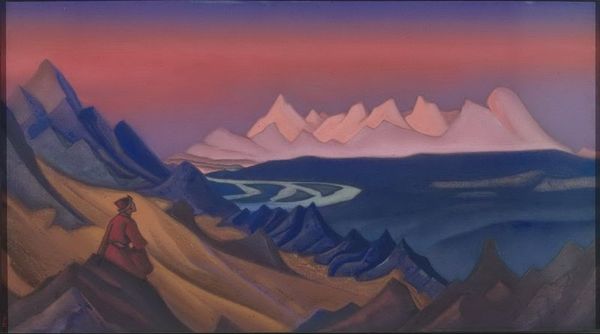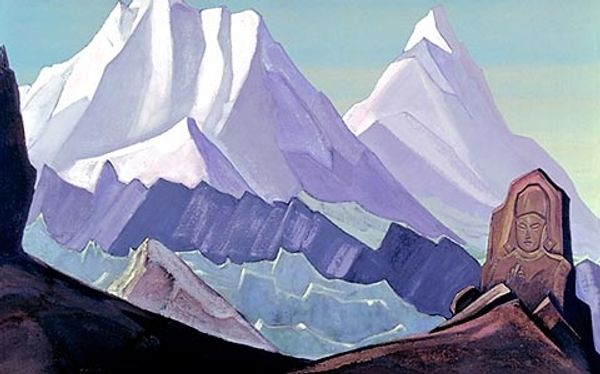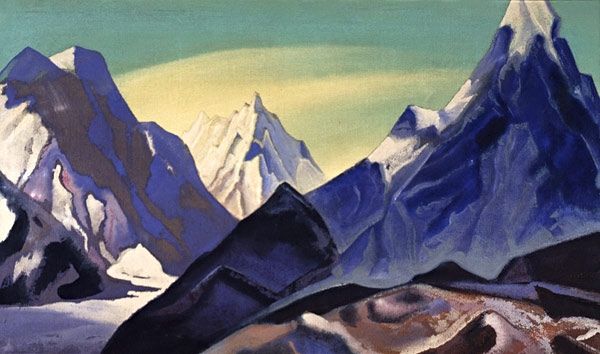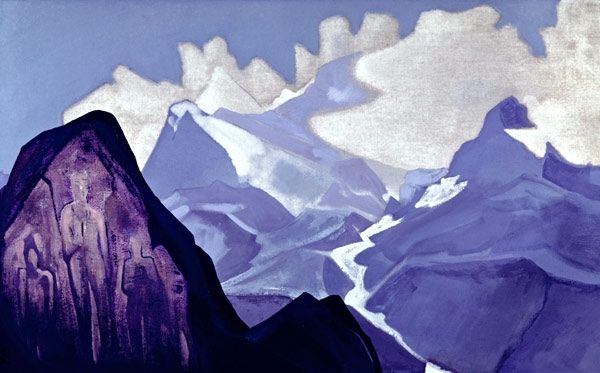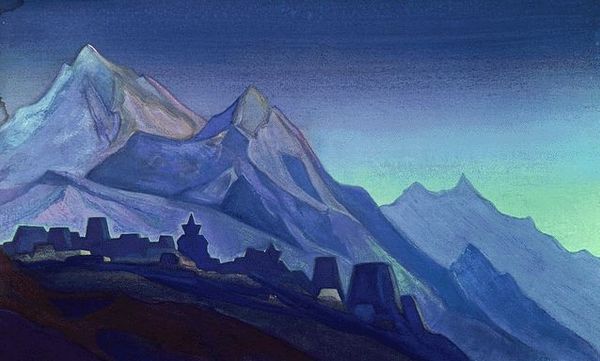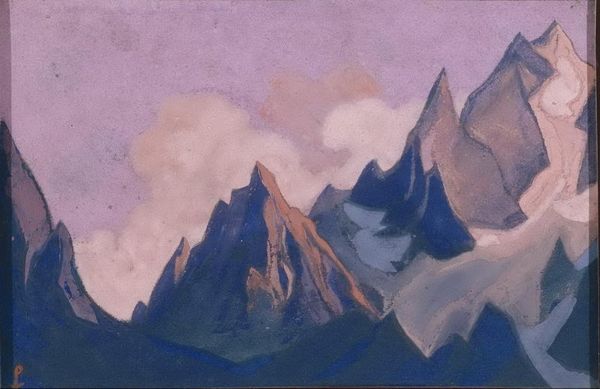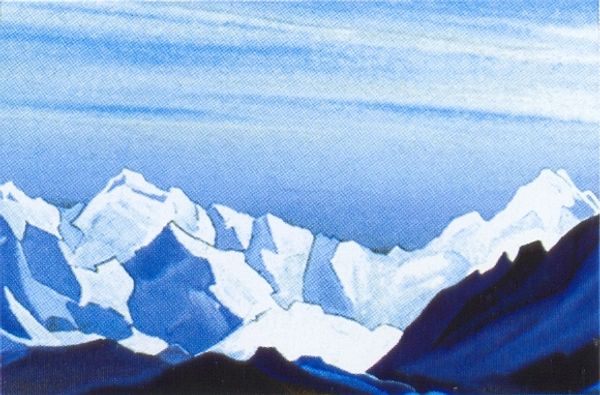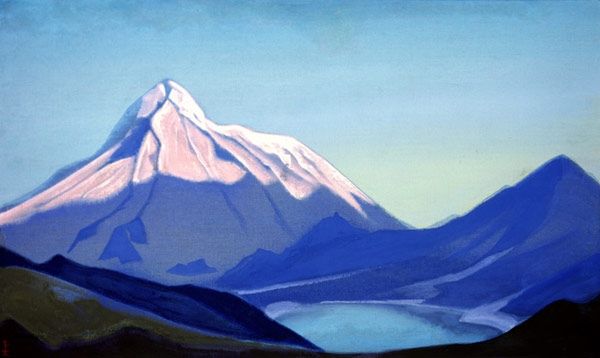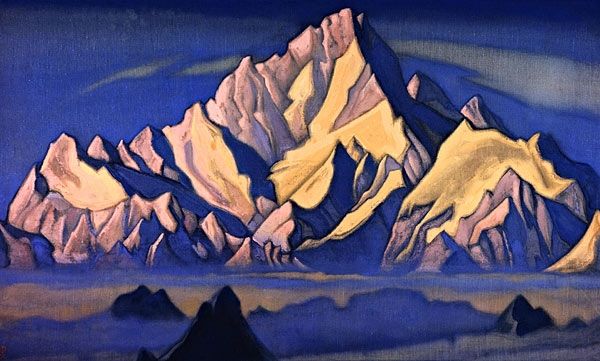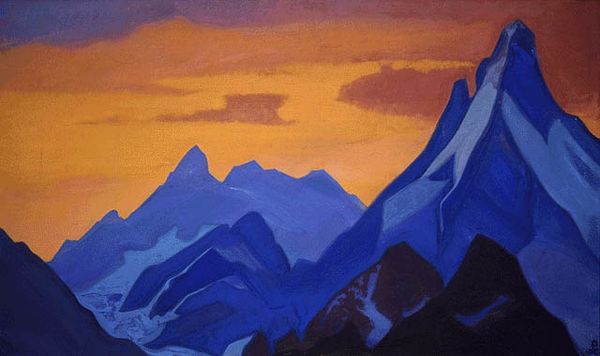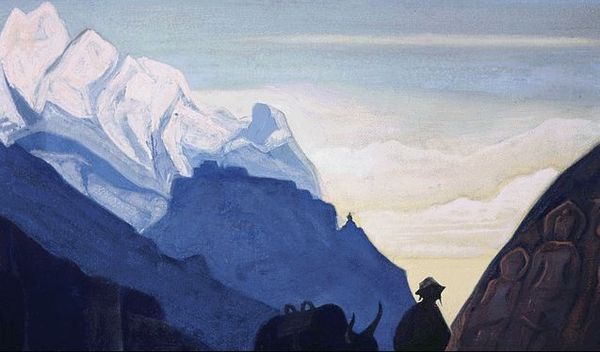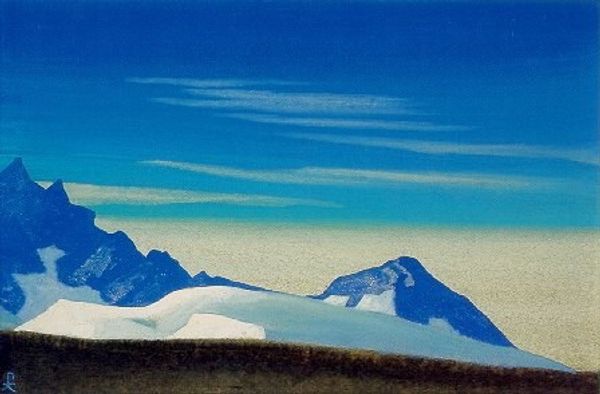
Copyright: Public domain
Editor: So, this is Nicholas Roerich’s "Himalayas. Evening," painted in 1940. The predominant blues and purples give it such a cool, almost mystical quality. What do you see when you look at this piece? Curator: Formally, the composition relies heavily on the interplay of geometric shapes and their varying tonalities to construct the mountainous landscape. Consider the stark contrast between the crisp, almost crystalline peaks, and the softer, more undulating foothills. Does this contrast evoke any specific emotions in you? Editor: It feels...serene, but also a little distant, maybe even imposing. The limited color palette, mostly blues and purples, is very striking. It seems like that emphasizes the structure. Curator: Precisely. The restricted palette and simplification of form direct our attention to the intrinsic structure. Note how Roerich uses value to define form, particularly within the snow-covered peaks. How do these tonal shifts guide your eye through the composition? Editor: My eye definitely goes to the lighter parts, then follows the edges of the peaks down into the darker shadows of the mountains. It creates a sort of rhythm. Curator: The strategic arrangement of light and shadow invites the eye to traverse the canvas. The overlapping planes suggest depth, yet the lack of atmospheric perspective flattens the overall picture plane, drawing our focus to its surface. It’s quite the dialectic, don’t you agree? Editor: Absolutely, it's fascinating how he balances depth and flatness. The more I look at it, the more I see the abstract shapes and how they come together to form this monumental landscape. Curator: A masterful execution of form to create something more profound. Editor: This was enlightening. Thank you!
Comments
No comments
Be the first to comment and join the conversation on the ultimate creative platform.
